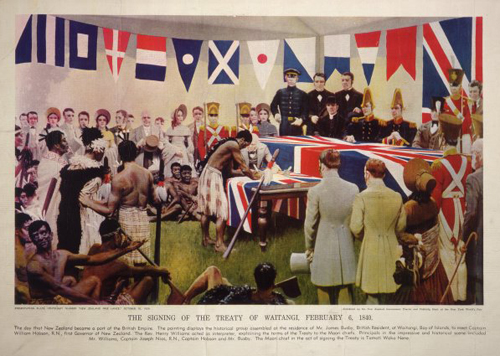 |
Treaty of Waitangi |
|
The founding document of New Zealand is called the Treaty of Waitangi. This is a document signed between the British government and the majority of the Maori tribes on the 6th of February 1840. The document contains three main agreements :
Due to the fact that the Treaty was not drafted by a qualified lawyer and that the Maori version was translated using words that don’t quite mean the same to Maori and English. There are discrepancies between the English version and the translated Maori versions of the Treaty. This has allowed for a difference in the interpretation between the two languages. The main discrepancies are between what the Maori thought the meaning of handing over sovereignty meant as well as what their possessions meant. To make matters worse the Treaty was never ratified or enacted into law so from the British (Crown) side, so for years there was and still is debate over whether the Treaty is even binding on the Crown. For the most part though the Treaty has been recognised as binding since strong Maori Protests in the 70′s and 80′s. In 1975 a Waitangi Tribunal was set up to investigate discrepancies in the translations as well as breaches to the Treaty. As a result, since the 1990′s the government has begun to negotiate settlements of historical (pre-1992) claims. Some of these settlements have included public apologies by the Crown, cash settlements of nearly $1 Billion or official recognition of Maori land which was taken from them. Today there are still many issues being contested in front of the Tribunal as well as in the Courts of law. Issues like right of the Maori to the proceeds and rights to mine the seabed as well as the use of the FM radio spectrum. |
|




